Best national parks in Europe
Best national parks in Europe: Love the outdoors, woods, lakes, plants, and animals? Explore Europe’s most stunning national parks. Come unwind in some of Europe’s greatest national parks; forget about the tourists, the beaches, the cities, and the shops.
Explore amazing national parks including the Goreme National Park, the Saxon Switzerland National Park, the Belluno Dolomites National Park, and the Plitvice Lakes in Croatia.
Discover the top locations for nature lovers when you book your hotel, guesthouse, B&B, camping, or apartment at the lowest price guaranteed. Europe offers a wealth of discoveries.
Best national parks in Europe
1. Plitvice Lakes Croatia
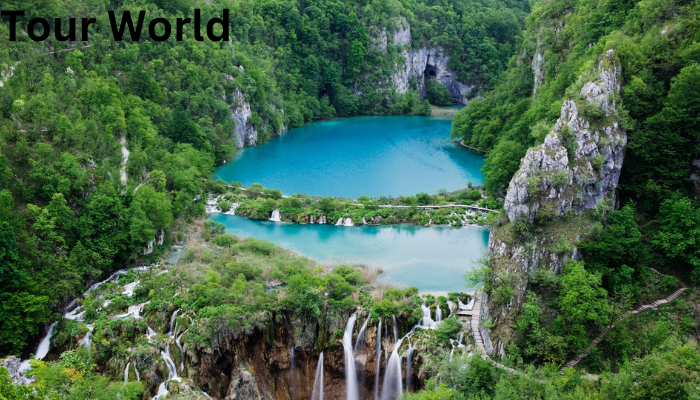
One of the most distinctive tourist destinations in Croatia is Plitvice Lakes. This is the kind of location that is ideal for guests of all ages, with simple walking routes, boardwalks dangling over the turquoise water, breathtaking overlooks, and picturesque waterfalls.
This region has long drawn nature enthusiasts due to its extraordinary natural beauty, and on April 8, 1949, it was designated as Croatia’s first national park. The Plitvice Lakes were internationally recognized on October 26, 1979, when they were inscribed onto the UNESCO World Heritage List, for their outstanding universal value—the process of tufa formation, which led to the construction of tufa, or travertine, barriers, and the creation of the lakes. After the national park’s limits were extended in 1997, its current size is little under 300 km2.
Smaller sections of the park are covered with grasses, while the majority of the vegetation is forest. Less than 1% of the park’s total area is made up of the lakes, which are its most visually appealing feature.
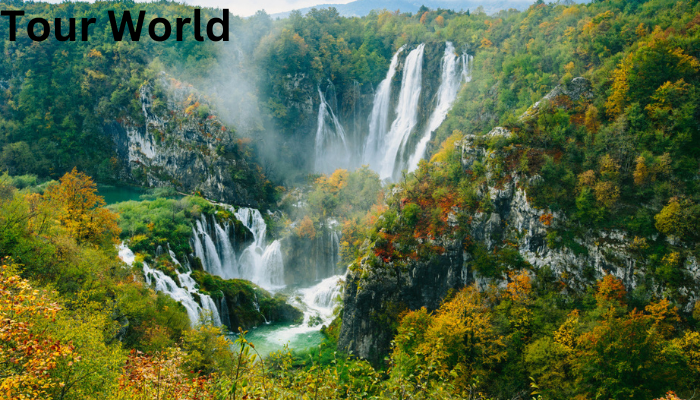
The 16 designated lakes plus a few smaller, unidentified ones that flow into each other make up the lake system. The Upper and Lower lakes make up the lake system because of the distinct hydrogeological conditions and geological substrate. Prošćansko jezero, Ciginovac, Okrugljak, Batinovac, Veliko jezero, Malo jezero, Vir, Galovac, Milino jezero, Gradinsko jezero, Burgeti, and Kozjak are the twelve lakes that make up the Upper Lakes.
These lakes are bigger than the Lower Lakes, have more gently sloping coastlines, and were created on impermeable dolomite limestone. The lakes that make up the Lower Lakes include Milanovac, Gavanovac, Kaluđerovac, and Novakovića Brod. They were formed in a deep canyon with high cliffs and a porous limestone bedrock. The lakes conclude the spectacular Sastavci waterfall, where the Korana River meets bursting under the falls’ base.
There are four hiking paths and seven distinct ways to explore the lake system in the Plitvice Lakes National Park. All year long, tourists may enjoy the park. It is mandatory for all visitors to adhere to the guidelines provided on the information panels, stay on designated paths, and not leave any evidence of their presence, including trash, graffiti, or any kind of environmental damage.
The Republic of Croatia’s oldest and biggest national park is Plitvice Lakes. Situated between the Lička Plješivica mountain range to the southeast and the Mala Kapela mountain range to the west and northwest, the park is situated in Croatia’s mountainous area. The park is administratively divided between Karlovac (9.3%) and Lika-Senj (90.7%) counties.
2. Wild Taiga Finland
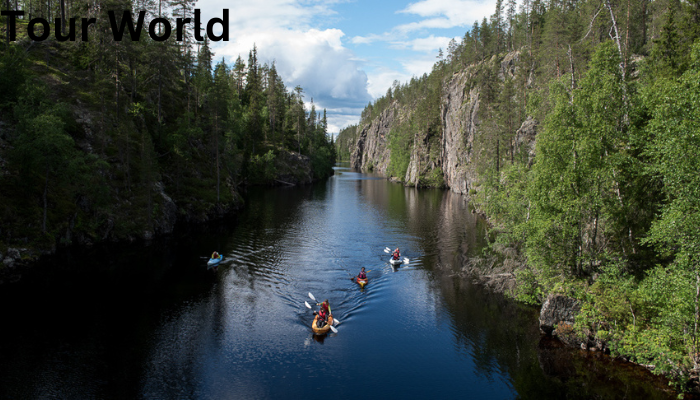
Wild Taiga is the region near Kainuu, Kuhmo, and Suomussalmi on Finland’s eastern border. The word “wild” describes the area’s untainted wilderness beauty, which presents a rare chance to witness big animals like wolves, bears, and wolverines in their native settings. The term “taiga” describes the northern evergreen coniferous forest zone that stretches from Finland eastward to Russia and ultimately to Asia.
You may trek in national parks, fish in Kuhmo’s untamed rapids, get up close and personal with large animals, and take in the tranquility of The Silent People. History and culture enthusiasts may explore the intriguing realm of the Kalevala and tour real-life battlegrounds and museums related to the Winter War. Among the highlights of the Finnish summer music festival season are Kuhmo Chamber Music and Sommelo, which offer a laid-back vibe for everybody.
Wild Taiga region offers the best opportunities for bear watching in Europe:
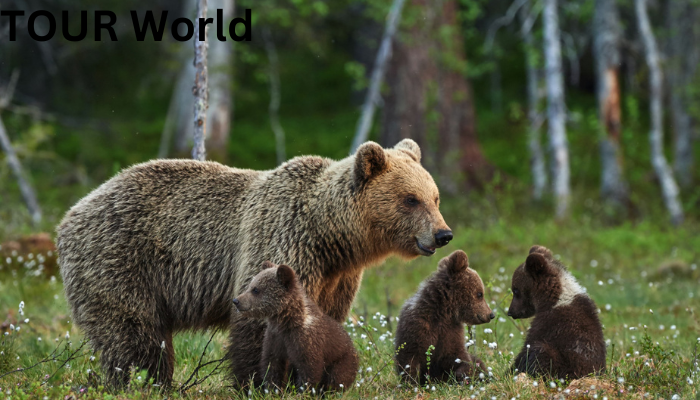
See the bears in the wild of Kainuu for a once-in-a-lifetime natural adventure! The finest place to view bears in Europe is in the Wild Taiga. Summer is the finest season to go on viewing excursions with European wild brown bears since there is enough light to take nighttime photos of these amazing creatures. Early April is when the bear-watching season starts. The first to wake up when the snow is still on the ground are large, ravenous males.
In the winter, when they hibernate, mothers give birth to their pups in the den. They wait until the ground is entirely thawed, generally by June, before bringing the cubs outside. Though the season lasts until October, June through September is the ideal time to watch. Numerous businesses in the region provide bear-watching excursions overnight or in the evening.
Wildlife safaris in the Wild Taiga region:
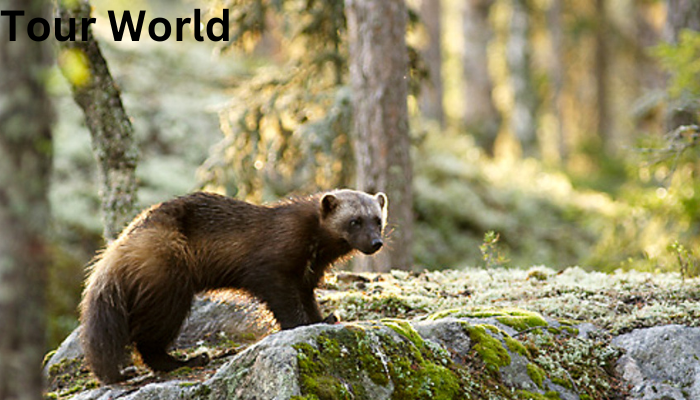
Because they are carnivores, predators can only be observed while they are feasting in their natural environment. The feeding carcasses are found close to the observation platforms.
Wildlife tours are planned as nighttime excursions or evening excursions before dark because all of these wild species are nocturnal. People are kept out of sight from animals in protective hides. They speak quietly and in whispers, making no noise that would frighten the animals. The skins include two-meter chimneys that convey human scents well over the bear’s perceptive sense of smell. Although there are bunk beds and dry toilets in each stall, most visitors are too thrilled to sleep!
Numerous businesses in the region provide trips for seeing beasts. While bear safaris are offered at Arola Farm Holidays, visitors may observe mother bears with their cubs at the Martinselkonen Wilderness Centre.
While Wildlife Safaris Finland’s trips take you to the heart of Russian wolf pack territory in the “No Man’s land” border area between Finland and Russia, Boreal Wildlife Centre and Bear Centre provide excellent viewing and filming opportunities. Alternatively, visitors can participate in self-drive wildlife adventure programs designed for international travelers and photographers. While there is no age restriction for sightseeing excursions, it is best suited for somewhat older kids because you need to know how to remain quiet.
Wild Taiga’s rich cultural summer:

This place hosts cultural activities all year round. July’s Kuhmo Chamber Music is the region’s most important yearly event. The elegant yet laid-back chamber music festival effortlessly combines music with carefree summer days and evenings, negating the necessity for an evening gown or tuxedo. In late June or early July, Sommelo, an ethnic music festival, takes place. Although Sommelo is rooted in the poetry of the Kalevala and Karelian ancestry, the event features contemporary live folk music from throughout the globe.
In 2019, Kuhmo was designated as UNESCO’s City of Literature, honoring the region’s Kalevala legacy. Elias Lönnrot, the Kalevala compiler, spent twenty years of his career in Kainuu. The Kalevala has been translated into more than 60 languages and has greatly influenced the development of the Finnish language and national identity.
Notable examples of its inspirations include the artwork of Akseli Gallen-Kallela and the classical music of Sibelius. In Kuhmo, the Kalevala is audible and visible throughout the year. The Kuhmo Cultural Centre in Juminkeko hosts both permanent and rotating exhibitions on the Kalevala, while the Petola Nature Centre narrates the story of a bear’s birth in the Kalevala.
3. Ecrins France
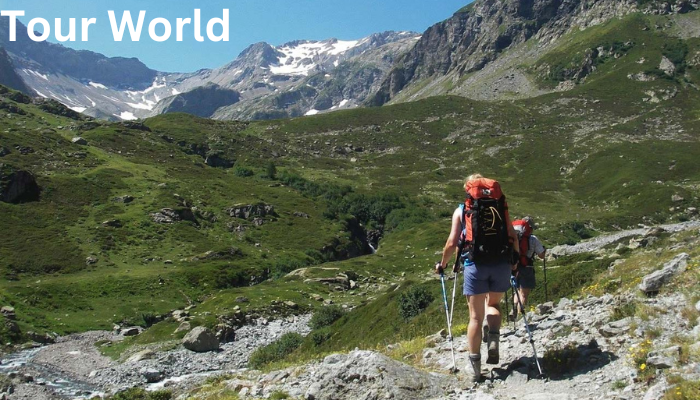
One of the ten national parks in France, and the second largest after Vanoise, is the breathtaking Parc National des Écrins. The 1,000 square kilometers protected area extends between Bourg d’Oisans, Briançon, and Embrun, crossing the departments of Hautes-Alpes and Isère. Because of its isolated position, the park is still essentially unspoiled.
The Romanche, Durance, and Drac rivers, among others, run quickly through the park’s rugged hilly terrain, carving up tiny, steep valleys. Hikers, rock climbers, mountain bikers, and river runners swarm the area in the summer to take in the amazing weather and breathtaking landscape. Popular winter activities include hut-to-hut ski touring, climbing, and snowshoeing. Ten km up the switchbacks from Bourg d’Oisans, the ski resort of Alpe d’Huez is located just beyond the park’s limits.
Excellent starting points for visiting the park are Briançon in the Durance Valley and Bourg d’Oisans, which are located 50 km southeast of Grenoble in the Romanche Valley.
The highest point in the Massif des Écrins range, the formidable Barre des Écrins peak (4102 m), is a well-liked climb for mountain climbers. Other magnificent peaks like Pelvoux (3946 m) and La Meije (3983 m) are around it.
The park has a diverse range of plants and animals. The park is home to one-third of France’s plant species as well as hares, marmots, foxes, chamois, and golden eagles. Even sighting wolves has been reported by a few people.
Getting to the Ecrins National Park:
Gap is the nearest transportation center to the southern edge of the Ecrins National Park, located 1 hour 45 minutes north of Marseille. The closest transportation center to the northern side is Grenoble. Both Grenoble and Marseille are accessible by air.
The rail stations in Gap and Briançon are well connected to major French cities; there’s even an overnight sleeper from Paris.
You can take public transportation to reach your final destination if you want. Local communities are served by regular buses and coaches that run from rail terminals.
Nevertheless, cabs are pricey and there is little public transportation in and around the highlands. Therefore, having a car is the best way to make the most of your stay, unless you’re on an organized trip.
4. Durmitor Montenegro
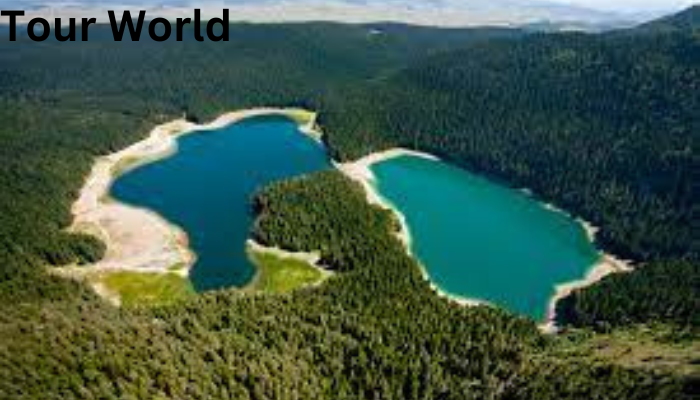
Durmitor is a mountain range in Montenegro that is a portion of the Dinaric mountains and a national park area. It has fifteen peaks that are higher than 6,600 feet (2,000 meters), including Bobotov Peak, which is the highest point in the nation at 8,274 feet (2,522 meters). Glacial lakes and wide valleys stretch between the hills. Lakes are surrounded by thick woods of fir and pine. Winter sports are prevalent in Žabljak, the highest village in the region and a famous tourist destination. Breeding livestock is done in the valleys.
As a component of the Dinaric Alps, the Durmitor massif is a World Heritage Site in Montenegro. At 2,523 meters, Bobotov Kuk is its highest mountain, and the vistas are breathtaking.
The Tara River Canyon to the north, the Komarnica River Canyon to the south, and the Piva River Canyon to the west form the boundaries of the Durmitor mountain range. Of the three, the tara canyon receives the most visitors.
There are several glacial lakes in the Durmitor National Park—locals refer to them as “mountain eyes”—as well as rivers and striking mountain peaks. The panorama is breathtaking. Over fifty peaks have an elevation of more than two kilometers.
Is Durmitor worth visiting?
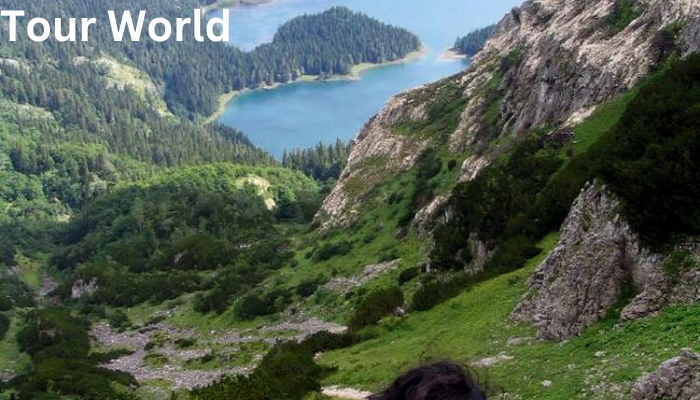
The main draws for most visitors to Durmitor National Park are the incredible gorges of the Tara, Draga, Susica, and Komarnica rivers, as well as Black Lake. The biggest and deepest canyon in Europe, the Tara River Gorge, is the most notable.
The rafting routes on the Tara River include the “Grand Canyon,” with the shorter route covering a distance of 18 kilometers and the longer route covering over 100 kilometers. It’s a pleasant way to discover the natural splendor of the deepest gorges in Eastern Europe by kayak or canoe.
One of the most well-liked locations for active tourism in Montenegro is Durmitor, which offers breathtaking hiking, rock climbing, mountain biking, and kayaking opportunities. There are some remarkable formations even below ground, including the ice stalactites and stalagmites of the “ice cave.”
The Durmitor Ring Road:
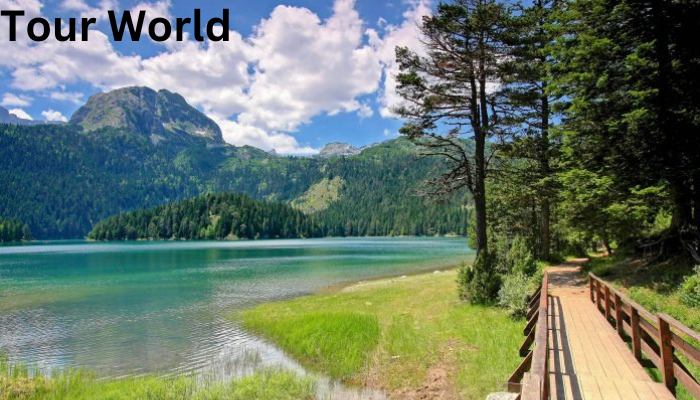
A circular scenic route that circles the Durmitor National Park for 85 kilometers is known as the Durmitor Ring (Durmitorski Prsten). Probably the best way to take in the breathtaking vistas is on a day excursion. If you want to stop regularly for picnics, quick walks, and photo ops, a whole day will do.
To ensure that you don’t miss the charming mountain villages along the road, drive gently. You may likely come across goats, lambs, or horses grazing close to the pavement roadside wildflowers. That is if you are going between spring and fall.
The ideal place to start your exciting journey is Zabljak, the only neighboring town with lots of places to stay and dine. If you decide to pause for lunch or breakfast, you can decide between the “Ukus Durmitora” and “Krcma Nostalgija.”
You may head toward “Viewpoint Tara Canyon” from Zabljak, pause there for some photos, and then proceed toward “Viewpoint Susica Canyon.” This mountain route winds up among European black pine trees before opening out to breathtaking vistas of the valleys below.
The National Park of Durmitor Particularly well-known for its abundant and varied plant and animal life is Montenegro. With any luck, you may spot some wild creatures like the peregrine falcon, European wild cat, brown bear, grey wolf, or golden eagle.
If you continue driving, you may sometimes come across the shepherds or farmers who use the alpine meadows for summer pastures.
5. Triglav Slovenia

Mount Triglav, which rises to a height of 2864 meters, is the most revered mountain in Slovenia. Climbing Triglav is a right of passage, and the summit is depicted on the nation’s flag and coat of arms, making it a revered national emblem. Many people claim that if you haven’t climbed Mount Triglav at least once in your life, you aren’t a genuine Slovenian. Mount Triglav, which towers magnificently above the Julian Alps, is physically and technically challenging, but the breathtaking vistas from the summit make it well worth the effort.
The entire area surrounding Triglav is home to Slovenia’s sole national park, which bears the name Triglav, which means “three-headed” in Greek. The beginning of July until the middle of October is the ideal season to ascend the peak.
The tallest peak in Slovenia may be reached by several different paths. While some Triglav routes need experience, some are more difficult and require more experience. Whichever way you take, the last hour and a half of the via Ferrata, which reaches the peak, is treacherous. Although the Triglav via Ferrata is well-known throughout the nation, it is an incredible path.
Typically, climbing Triglav takes two days. The majority of Triglav hiking routes begin and conclude at a mountain hut at the base of the mountain (6–8 hours). On day two, you get an early start and summit the peak (6–8 hours), either by returning the same way you came or by taking a different path.
However, several longer routes in the Julian Alps combine a multi-day hut-to-hut journey with the summit of Triglav. You can even take a day excursion to Triglav, but your ambitious goals won’t be supported unless you’re in excellent physical shape and the weather cooperates. This is a list of many approaches to climbing Triglav, varying in length, difficulty, and technical level.
Hiking from the pokljuka Plateau (bohinj lake area):
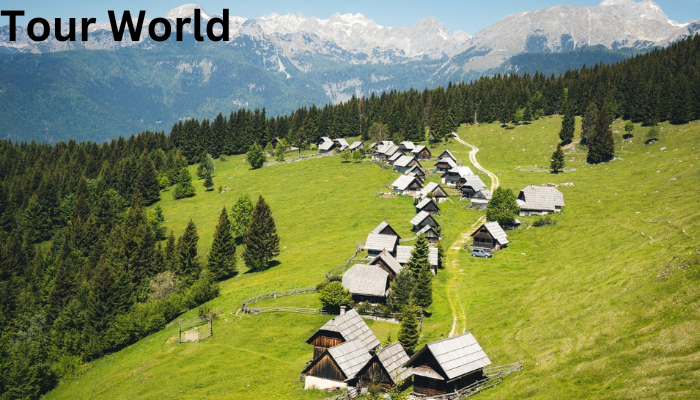
This is one of the quickest routes to the summit of Triglav since it’s not too difficult to drive from Bohinj Lake to the Pokljuka Plateau. Once the trail passes through Planina Konjscica’s alpine meadow, it comes to a plateau with views of the surrounding 2000-meter-high mountains. From there, the route crosses the slopes of Tosc Mountain before climbing the difficult Studorski Preval Ridge (1870m). Hiking for three hours will bring you to the Vodnik Dom Hut (1817m).
There are two ways to reach the top of Triglav from the plateau that forms its base. There are via ferrata sections in both of them, complete with steel cables and ladders. The hike’s most exposed and challenging section is this one. The path that passes by the Dom Kredarica Hut (2515m) is longer and more difficult, or you may attempt the Dom Planika Hut (2401m) trek, which is a little simpler. In all scenarios, the slopes descend vertically on both sides, and the last ridge leading to the peak is extremely narrow but well-secured with cables.
